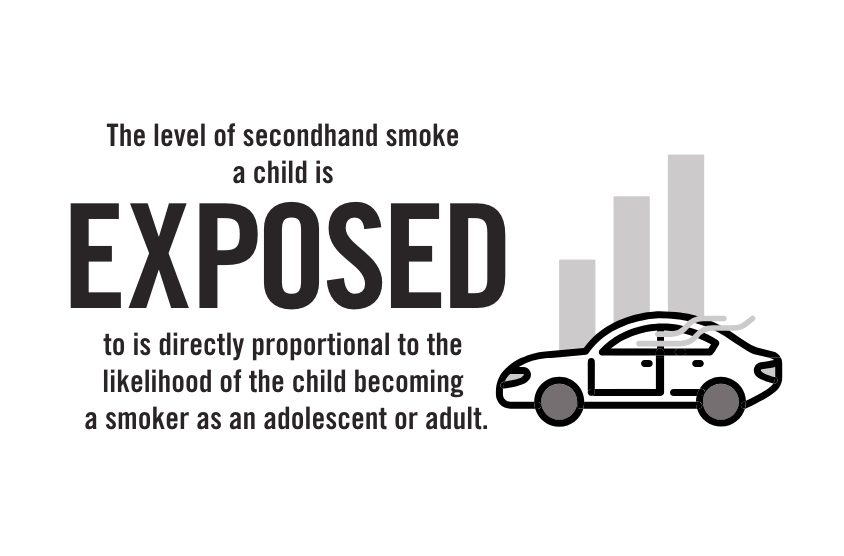Smoking In Cars With Children Present
A simple way to drive out secondhand smoke
84% of Oklahomans favor a law prohibiting smoking in vehicles when children 16 or younger are present.
An overwhelming majority of Oklahomans agree: smoking should not be allowed in vehicles when children are present. If you agree, what are you going to do about it?
Want to show your support for stronger tobacco control policies?
Want to continue the conversation?
Time for a Change
Oklahoma lawmakers have tried — and failed — to protect our youth before. In 2017, legislation that would ban smoking in vehicles containing children cleared an Oklahoma House committee, but never made it to the House Floor for a vote. As a result, kids are still unprotected to this day.
Secondhand smoke contains hundreds of harmful chemicals, 70 of which cause cancer. It has been proven to cause heart disease, stroke and an array of other adverse health effects.
Children are particularly vulnerable to secondhand smoke. Their bodies and lungs aren’t fully developed, so exposure to secondhand smoke leaves them at greater risk for serious health issues, including:
- Respiratory illness
- Ear infections
- Lung infections
- Asthma attacks
- Bronchitis
- Cancer
When children are exposed inside a vehicle — where secondhand smoke is highly concentrated — these risks are substantially amplified. In fact, a Stanford research study showed that smoking just half of one cigarette in a vehicle can produce secondhand smoke levels 10 times higher than the hazardous limits set by the Environmental Protection Agency. Even with the windows cracked or rolled down, toxin and carbon monoxide levels are still dangerously high.
In Oklahoma, it’s still legal to smoke inside cars when children are present. Our kids are suffering. It’s time for a change.
By prohibiting smoking in vehicles with children present, we can help our children breathe easier and live healthier.
Why Act Now?
Taking steps to protect our children today is critical to their future. The level of secondhand smoke exposure a child experiences is directly proportional to their risk of becoming a smoker later in life.
Furthermore, youth smokers are more likely to develop severe levels of nicotine addiction compared to adults. That leads to continued tobacco use as they grow older, contributing to the long-term negative health effects of tobacco addiction.

How Oklahoma Stacks Up
Several states and numerous cities and counties across the U.S. have already passed smoking bans in vehicles with children present, including nearby Arkansas and Louisiana. The efforts by these states are saving the lives of their most vulnerable citizens.
Oklahoma’s tobacco control policies remain out of step with our neighbors’ and with the current science… and the longer we wait to catch up, the further behind we fall.
READY TO MAKE A DIFFERENCE?
Sign up for the Tobacco Stops With Me newsletter and show your support for a tobacco-free Oklahoma.







